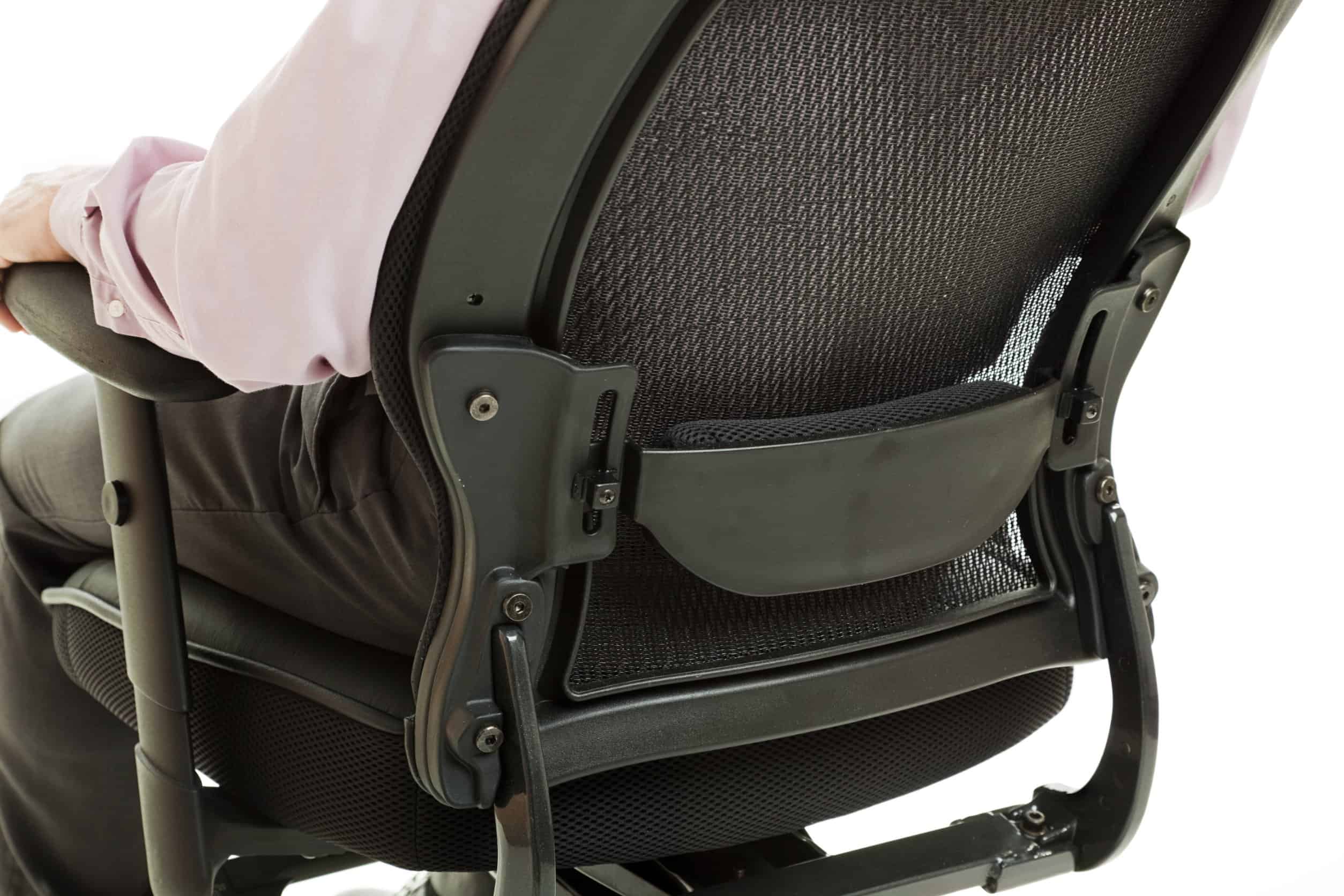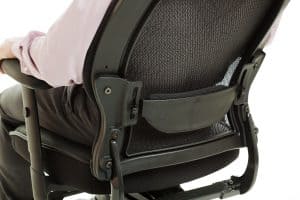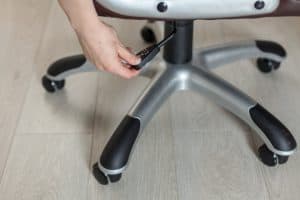Sitting on an uncomfortable chair for hours can cause back pain. Since we spend around 40 hours per week in a sitting position (at least!), it is reasonable to adjust our sitting station so that the most critical parts of our body are properly supported.
With that in mind, you may want to consider a good ergonomic chair with lumbar support that will help alleviate or completely prevent back pain. You can also get a lumbar support pillow and attach it to your chair for extra comfort at a low price.
But how do you choose a chair with proper lumbar support? Where is lumbar support supposed to be? How high should lumbar support be? We’ll answer these questions in this article.

Types of Lumbar Support
There are different types of lumbar support. Some are built-in, while others need to be attached to the chair. They can also be fixed or adjustable.
Fixed Lumbar Support
Fixed lumbar support is a built-in feature, and it’s not adjustable, which lowers the price of the chair.
Adjustable Lumbar Support
These are more ergonomic than fixed lumbar support cushions since they can accommodate your shape and size. You can adjust their height, depth, and firmness to your liking.
Dynamic Lumbar Support
Dynamic lumbar support automatically adjusts its shape to support your body. High-end ergonomic chairs, like the Herman Miller Aeron, come with this feature.
You need to manually adjust the dynamic lumbar support according to your needs the first couple of times you sit in the chair. After that, it will automatically adjust to the shape of your back.
External Lumbar Support
If your chair has no lumbar support and you don’t want to buy a whole new chair, you can simply use external lumbar support. It’s a cushion attached to the backrest of the chair with straps.
External lumbar support is great because you can use the same one for the office chair, car seat, and your house chairs.
Where Should I Place Lumbar Support?
The lumbar support should be placed on the chair’s backrest, on its lower part. If you’re buying a new chair and notice a bumpy pillow on the inner bottom of the back rest, that’s lumbar support.
If you’re using the external support, consider attaching the piece while sitting so that it supports the lower part of your back.
How High Should Lumbar Support Be?
The lumbar support should be positioned at the small of your back; a curve located an inch or two below the waistband. If the lumbar support is at the proper height, you should feel it in the kidney area: from the waist through the small of your back.
Run your hand over your back, and you’ll get what we mean.
To find out whether your lumbar support is at the proper height, just sit on your chair and lean back. Do you feel a gap between the chair and your lumbar region?
If you feel it, you should keep moving your lumbar support piece until it can support your entire lumbar area.
You can easily position external lumbar cushions to perfectly match your lumbar back height simply by moving the attaching stripes up or down.
How Should Lumbar Support Be Positioned?
Any lumbar support cushion should be positioned in such a way that it helps keep your lower back in a straight position.
A good starting position is the middle of the lumbar part of the spine, on the small of the back.
Once you get this starting position right, you can make other smaller adjustments to fit your back properly.
How Should Lumbar Support Feel?
The main goal of using ergonomic furniture is to sit comfortably in your chair and prevent any pain. Therefore, the lumbar support should help you release tension while sitting straight.
Properly positioning the piece is vital, but firmness is also important.
Some people prefer softer lumbar cushions that they can lean in, while others feel like their back is more appropriately supported with a firmer cushion.
A general rule of thumb is that a lumbar support cushion should be thick and firm enough to stabilize your spine and back. The optimal thickness is around 4 inches in the center of the cushion.
If the cushion is thinner, it won’t be able to keep your spine stable, which will eventually result in another round of back pain because the natural curve of your back will begin to flatten. This will exacerbate back health issues that can last a lifetime.
On the other hand, a thicker cushion can worsen your back condition before you know it. They affect your spine’s natural curve shape, which can gradually lead to sharper back pain.
How to Pick the Right Lumbar Support Cushion?
Here are some of the essential features to look for in a lumbar support system on an ergonomic chair or an external lumbar support cushion.
The Filling
Ideally, a lumbar support cushion will be stuffed with pure memory foam or natural latex. These two materials have the best performance regarding adjustability and durability.
Memory foam is made of polyurethane foam mixed with various compounds, and it can perfectly match the contours of your body while remaining firm and supportive. That makes it perfect for relieving and preventing back pain.
Natural latex has similar properties but also some added value. Since it’s made of rubber tree sap and contains no artificial materials, it’s a non-toxic and highly breathable material, which helps prevent sweating, rashes, or other unpleasant reactions that can occur with synthetic materials.
Hypoallergenic Insulation
A removable hypoallergenic cover you can take off and wash in the washing machine is great for hygiene.
This is often not the case with built-in lumbar supports on ergonomic chairs, but you can look for a chair made of hypoallergenic cover fabric and clean it regularly.
The external, attachable lumbar support cushion is quite advantageous in that respect. These adjustable pieces usually come with removable covers, so you can simply pick a hypoallergenic material and wash it regularly.
Optimal Thickness
As mentioned above, a good lumbar support cushion should be firm enough to support and keep your back straight, but it should be neither thinner than 4 inches nor much thicker. Either option can do more harm than good.
Conclusion
The lumbar support on a chair is a must-have ergonomic feature to eliminate and prevent back pain. The optimal placement of lumbar support is the small of your back within the lower back curvature.




